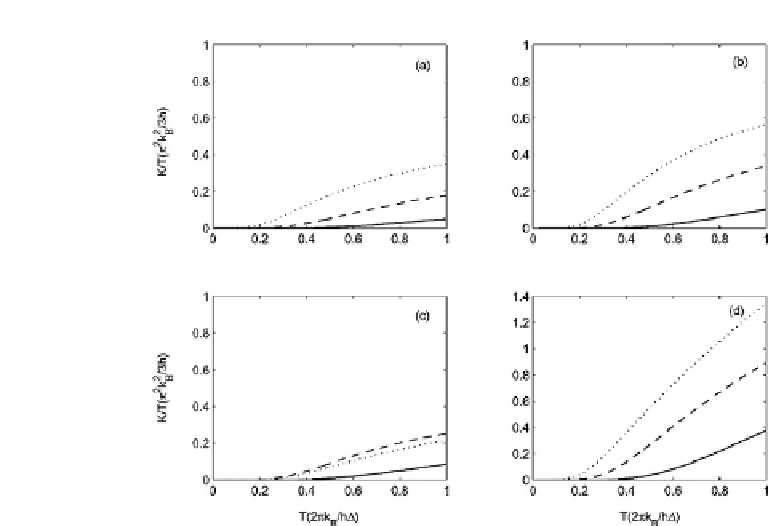Environmental Engineering Reference
In-Depth Information
Figure 4.4
The thermal conductance divided by temperature
K
/
T
,which
is reduced by the zero-temperature universal value
π
2
k
B
/
3
h
, as a function
of the reduced temperature
k
B
T
/
for different structural parameters,
where
=
ω
m
+
1
−
ω
m
=
π
v
T
/
W
I
. Here, the defect is clamped material
[51].
mode can be excited, and the reduced thermal conductance for
thezeromodemonotonouslyincreasewithincreasingtemperature,
similar to the behaviors for higher modes, such as modes 1 and 2.
This result results from the hard wall boundary condition between
the defect and surroundings. Moreover, due to the direct increase of
thereducedthermalconductanceforthezeromode,thedecreaseof
the overall reduced thermal conductance
K
/
T
can not be observed
in low temperature region (Fig. 4.4d). Thus, one knows that the
universalquantumthermalconductancecanbeobservedonlyunder
condition of the ballistic boundary, where the zero mode can be
excited in the limit
T
→
0. Moreover, the effects of defects on
the thermal conductance depend upon the type and sizes of the
defects.








